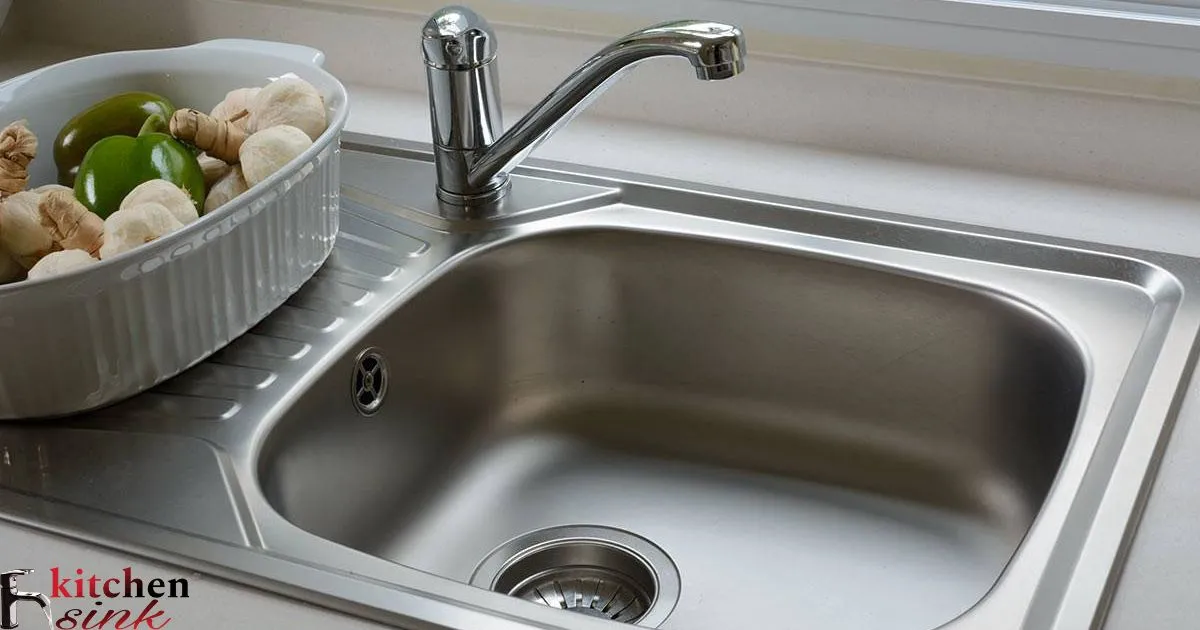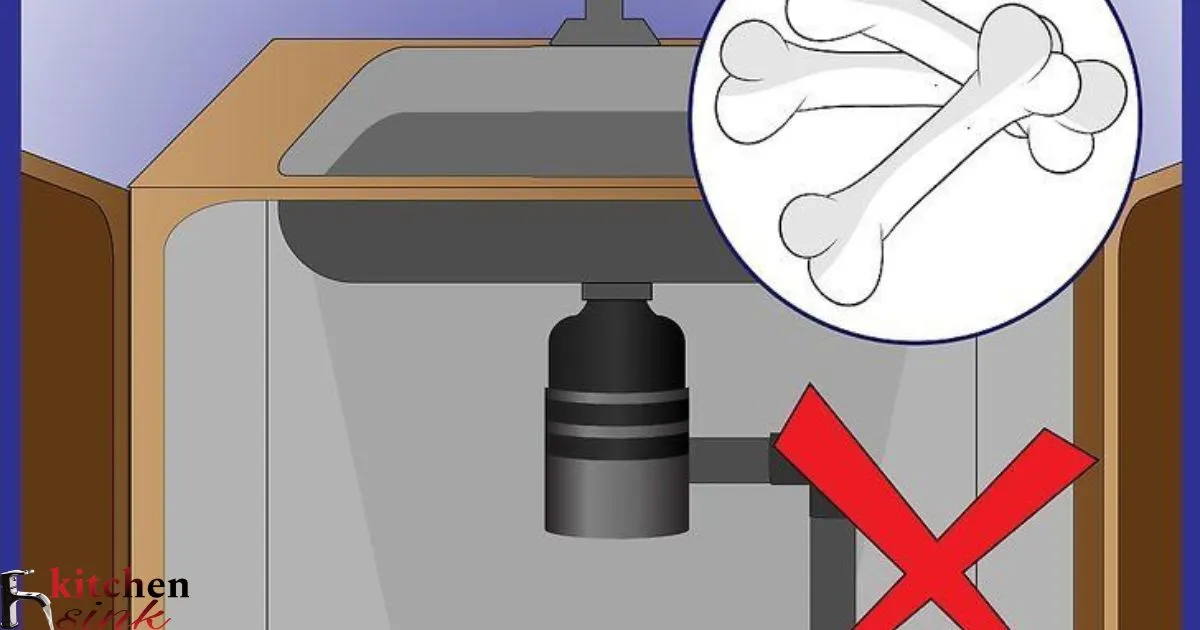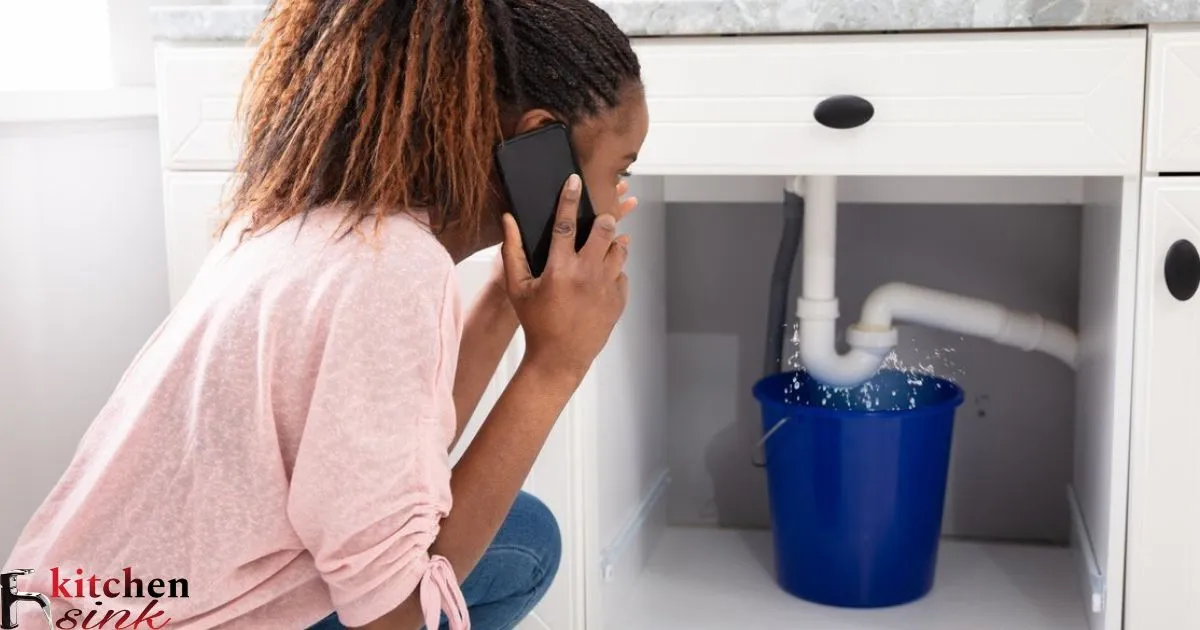A kitchen sink not draining means water is not able to go down the drain properly when you run the faucet or wash dishes. The water gets stuck in the sink and does not empty out like it usually does.
Why is your kitchen sink not draining? This is a frustrating issue to deal with when you just want to do dishes or clean up after cooking. Finding out what is causing the clog can help resolve the problem so your sink begins draining normally again.
Common reasons a kitchen sink may not drain include food particles or grease residue building up over time in the drain pipes. Leaves or other debris accidentally falling into the garbage disposal can also be a culprit. Identifying and addressing the obstruction blocking water flow will fix the draining issue.
Common Causes For A Kitchen Sink Not Draining
There are several common reasons why a kitchen sink may suddenly start draining slowly or stop draining all together. Finding and addressing the cause will return normal drainage. Determining if the issue is a minor clog or sign of deeper problems helps tailor the solution.
Over time, grease, food remnants, and other debris collecting in the drain pipes can restrict water flow. Identification of potential problem areas helps narrow the search for blockages.
Be Blocking My Kitchen Sink Drain?
The P-trap is a common initial culprit for drain clogs. This curved section of piping below the sink often collects residue over the months. Buildup inside can obstruct drainage. Clogs may also develop deeper in the drain arm or wall tube connecting to main drain lines.
Careful inspection inside the visible pipes helps locate obstructions further downhill. Clearing blockages as they form prevents serious slowdowns. Identifying potential problem spots guides focused cleaning.
Grease And Food Buildup In The P-Trap
The short bent pipe under the sink is called a P-trap. It holds standing water to seal drain smells. Unfortunately, grease and food easily adhere inside here. Over time, a hard pack develops and reduces flow.
Periodic cleaning removes accumulations before they halt drainage. Pouring boiling water or using commercial drain cleaners loosens deposits that can then be flushed away.
Clogs Further Down The Drain Pipe
If a clear P-trap does not cure a draining issue, blockages could lie deeper in inaccessible pipes. Roots, mineral deposits, or accumulated grease coating the interior narrow flow.
A drain snake allows manually poking and twisting to break apart clogs farther downstream. Several attempts may be needed on stubborn impediments wedged in tight curves. Persistence usually eventually restores optimum flow.
A Blockage In The Garbage Disposal
An occasional fork or other utensil accidentally dropped into a running garbage disposal can jam the grinding components. Jammed disposal units prevent drains from functioning properly.
Manually rotating the bottom impeller ring by accessing the disposal mounting ring or reset button helps dislodge debris. Clearing out loosened material returns operational drainage. Bypassing a disposal simplifies access for snake use if needed.
Obstructions In The Overflow Drain
Messy food accidents can push bits into a secondary overflow drain on the sink rim. These small tubes then clog easily. Noticing putrid smells or backup clues its location.
Carefully extracting any trapped debris frees this emergency route. Fix Airlock In Kitchen Sink Drain Periodically flushing with warm water keeps it wide open if the primary gets plugged.
Troubleshooting A Slow Or Non-Draining Kitchen Sink
Before tearing apart plumbing, smart sleuthing helps identify the precise root cause. Methodical inspection examines each component from P-trap outward. Isolate exact trouble spots to streamline repairs.
Process of elimination guides targeted cleaning. Noting water flow or backlog signs reveals where blockages concentrate efforts. Narrowing the search shortens solution time.
I Tell What’s Wrong With My Kitchen Sink Drain?
There are some simple tests you can perform to identify where a blockage may be located in your kitchen sink drain. Running water tests and checking each section of the drain system will help pinpoint the problem. Try the following steps and see where the water stops draining – this will tell you what part of the drain is clogged.
| Test Step | Result if water drains | Potential Problem Area |
| Remove P-trap, fill and empty sink | Water drains | Clog is between P-trap and wall |
| Replace P-trap, fill and empty sink | Water drains | Clog is downstream of P-trap (in drain arm or wall) |
| Check inside P-trap for debris | Grease/gunk visible | P-trap is clogged |
| Snake accessible drain pipes | Hit resistance at a point | Clog located where resistance found |
Inspecting The P-Trap
The accessible P-trap permits visual checks inside. Grease or debris lining the curves signals needs cleaning. Shining a flashlight assists spotting internal crud.
Manually feeling around also detects any foreign objects from accidental drops. Extracting blockages returns drainage. Lubricating interior surfaces prevents future adhesion of residues.
Checking The Drain Pipe
Snaking accessible drain pipes allows monitoring for resistance indicative of clogs. Rotating and pushing encounters crunchy buildups or soft sediments.
Gradually extending the plumber’s snake seeks out obstructions. Clearing each discovered impediment restores fuller flow. Multiple passes completely unclog hard to reach spaces.
Testing The Garbage Disposal
Manually spinning the bottom grinding cone locates jams. Fishing out trapped items frees disposal operation. Drain tests determine if this resolved drainage issues.
Occasionally, mineral deposits hardened inside disrupt smooth rotation. Soaking disposals in vinegar or lime-away helps soften and remove internal buildup over time for smoother future use.
Trying A Plunger Or Drain Rod
Simple hand tools offer DIY attempts at clearance. Plunging up and down manipulates stuck particles. Drain rods grasp debris to manually extract.
Hopefully minimal effort succeeds. But resistance signals a dedicated snake may better dislodge hardened adhered clogs deep in bends. Persistence pays off with cleared passageways.
Clearing Common Kitchen Sink Drain Obstructions
Drain clogs commonly form from particles clinging inside pipes. Strategic cleaning extracts blockages. Both chemical and physical methods effectively target different blockage types and locations. Choosing techniques tailored to the job ensures thorough clearance.
Being organized keeps tools and cleaners in order for quick resolution when obstructions inevitably appear.
Best Way To Remove Grease From My Kitchen Sink Drain
5 easy, short best ways to remove grease from your kitchen sink drain
- Baking Soda and Vinegar
Pour 1/2 cup baking soda down the drain, follow with 1/2 cup vinegar. Cover and let fizz for 10 minutes to cut through grease buildup.
- Boiling Water
Pour a pot of boiling water down the drain to melt away grease deposits. Repeat weekly for maintenance.
- Drain Cleaners
Use a caustic liquid drain cleaner or crystals designed to dissolve grease buildup chemically. Follow instructions carefully.
- Plunge or Snake
Use a plunger or hand auger to break up grease physically. Twist and pull to extract clogs from the drain.
- Grease-Cutting Sprays
Spray chemical drain cleaner formulas directly onto stubborn grease stains. Let sit before flushing clean with water.
Baking Soda And Vinegar Drain Cleaner
This simple but powerful solution naturally cuts through grease. Baking soda neutralizes odors as vinegar’s acidity cuts grease bonds. Pour a cup of each, cover, and let fizz for scrubbing power.
Flushing with boiling water sends remaining slurry toward traps to capture in trash. Regular use maintains cleanliness before significant accumulation. Natural cleaners safely tackle grease in pipes.
Mechanical Drain Cleaners
Hand augers or power snakes feature flexible metal spirals remove stubborn clogs. Rotating slowly penetrates tight curves while extracting obstruction material.
Patience works the tool up and down repeatedly until drainage fully clears again. Persistence with mechanical agitation addresses buildups that sat longer. Combining chemical and physical cleaning ensures best results.
Plunging And Snaking The Drain
A rubber plunger forms a seal to generate water suction that pulls and breaks up clogs. Inserting and pulling repeatedly manipulates debris loose.
Where plunging shows no signs of dislodging a clog, a drain snake locates and extracts it via mechanical twisting and extraction down the out-of-reach pipe. Together these tools handle different problem levels.
When To Call A Plumber For Kitchen Sink Drain Problems
Most issues respond to chemical or mechanical clearing by a homeowner. However, deeply imbedded root intrusions, cracked lines, or recurring blockages may signal plumbing system problems beyond DIY solving.
Professional plumbers possess specialized equipment like camera inspection tools, power augers, and repair skills. They efficiently diagnose such advanced cases to implement permanent repairs.
I Fix My Kitchen Sink Drain Issue Myself?
Minor drain clogs usually take minutes to handle independently. But backing assessment and any dismantling requires caution. Weighing the job scope helps decide whether calling a plumber better preserves home and safety.
Major Clogs Deep In The Drain
Clogs lodged deep in wall pipes beyond the accessible portion sometimes require professional-grade mechanical snakes. Home versions may prove too short for the task. Plumbers own heavy-duty, extended spinning tools.
Old, Rusted, Or Broken Piping
Age wears piping thin and brittle. Rust causes leakage and internal pins supporting clogs. Cracked lines risk expensive floods if disturbed without proper replacement skill. Let pros address such deteriorated systems.
Beyond Diy Troubleshooting Skills
Recurring or puzzling drainage issues may signal non-clog factors like poor venting, sloping, cracks, or join problems requiring inspection cameras. Pro guidance remedies underlying mechanical defects efficiently as a one-time permanent fix.
Preventing Future Kitchen Sink Drain Clogs
Some key steps minimize drainage issues by reducing what enters pipes. Regular maintenance also deters accelerated buildup. Care prevents plumber dependence through responsible habits.
I Keep My Kitchen Sink Draining Freely?
Limiting intrusions preserves long-term drainage. Drain covers, strainers trap food before entering pipes. Pouring fats into the trash rather than down drains prevents their slow adhesion buildup.
Using Drain Covers And Filters
Strainer baskets atop sinks catch particles too large to safely enter the plumbing system. Drain covers also block objects accidentally falling directly down the disposal or sink opening. Together these outer barriers protect inner pipes.
Avoiding Grease And Large Food Particles
Pouring grease or scraping foods into the garbage instead of down drains spares inevitable pipe cling issues. Running hot water after cooking clears minor particles while drain still able. Care keeps grease from starting to accumulate.
Regular Drain Maintenance
Monthly drain treatments with chemical cleaners or boiling water safely remove light buildups before obstruction. Annual mechanical augering clears moderate accumulations before major blockages form. Vigilance prevents expensive plumber calls later.
Frequently Asked QuestionWhat do I do if my sink is full of water and not draining?
Try using a plunger to break up any clogs.
How can I check for a clog deep in my drain pipes?
Use a drain snake to probe further down the line from the P-trap.
Why would my disposal cause drainage issues?
A utensil stuck in the disposal can prevent it from operating and draining properly.
Should I pour grease down the drain?
No, poured grease will quickly build up and restrict water flow over time.
When is it time to call a plumber?
If you’ve tried multiple drain clearing methods without success or notice other plumbing issues.
Conclusion
Dealing with a kitchen sink that is not draining properly can be frustrating. However, identifying the cause of the blocked drain is usually simple through careful inspection and testing of each section. With some basic tools and drain clearing products, many common drainage issues can be solved quickly without needing to call a plumber.
Practicing preventative drain maintenance by not pouring fats and oils down the sink, using drain covers, and running hot water after cooking can help reduce blockages from occurring as well. Addressing drain clogs promptly prevents minor problems from escalating into more serious plumbing repairs.



